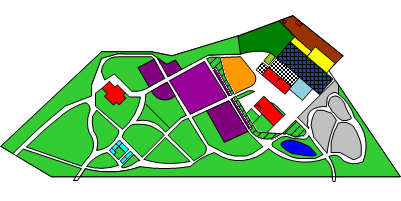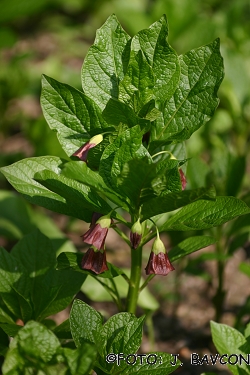



| NOMBRE LATINO | Scopolia carniolica | |
|---|---|---|
| AUTOR | Jacq. | |
| NOMBRE ESLOVENA | kranjski volčič | |
| INGLES NOMBRE | ||
| GÉNERO | Scopolia | |
| FAMILIA (LATINO) | Solanaceae | |
| FAMILIA (ESLOVENO) | razhudnikovke | |
| ORDEN | Solanales | |
| CLASE | Magnoliopsida | |
| DIVISIÓN | Magnoliophyta | |
| REINO | Plantae | |
| TIEMPO DE FLORACIÓN | abril - mayo | |
| PREVALENCIA | Sr. in JV Evropa | |
| LISTA ROJA | ||
| CITES | ||
| PLANTAS CRECEN EN ETIQUETADO ( | ||
 | ||
| PLANTAS IMAGEN |
|---|
 |
| Scopolia carniolica |
| Scopolia (Scopolia carniolica) is a plant blooming in beech forests in spring. At first a small plant, it quickly develops into a lush herb with nodding brown flowers hanging from under the leaves. The plant was brought to the world of botany from the area of the town of Idrija, where it was discovered by the town's first doctor, Johannes Antonius Scopoli (1723-1788). It was described even earlier, by Pietro Andrea Mathioli (1500-1577). Scopoli sent its seeds along with the first edition of his seminal work on Carniola's native flora, Flora Carniolica (1760), to the Swedish botanist Carl von Linné. In honour of Scopoli, Linné named the plant Hyoscyamus scopolia. In 1764, an all new genus, Scopola, was introduced in Scopoli's honour by the Viennese botanist Nicolaus Joseph von Jacquin. In the second edition of Scopoli's Flora Carniolica (1772), the plant was already classified as a species of the genus Scopola. Since then, its name has changed only slightly, into Scopolia carniolica. Text: J. Bavcon |
¡ESTABLECIMIENTO CON TRADICIÓN Y CONOCIMIENTO DESDE 1810!

CELEBRA EL JARDÍN BOTÁNICO - ¡GUARDIÁN DE LA BIODIVERSIDAD DURANTE 215 AÑOS!